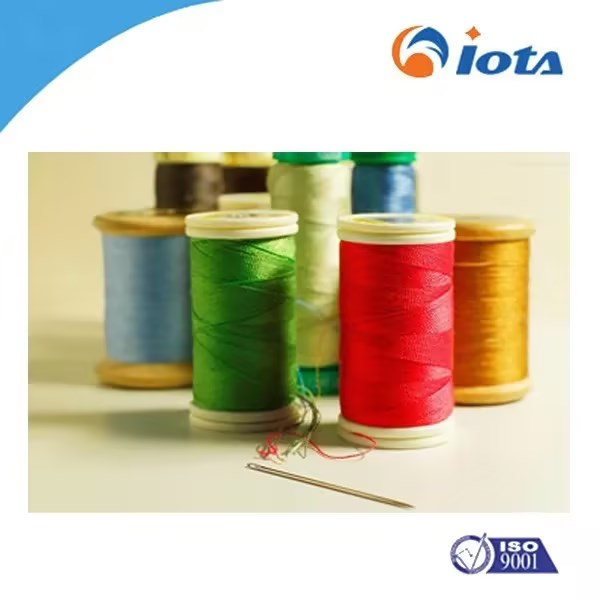Application of Silicone Oil in Dyeing Treatment of Textile Industry
Silicone oil, as an organic compound with a unique chemical structure and physical properties, plays a crucial role in the textile industry. Especially in the dyeing process of textiles, the application of silicone oil not only improves the quality of fabrics, but also meets the market's demand for diversified and high-performance textiles. This article will explore in detail the specific application of silicone oil in dyeing treatment in the textile industry, including its role, types, application advantages, common problems, and countermeasures.
 1、 The role of silicone oil in textile dyeing treatment
1、 The role of silicone oil in textile dyeing treatment
Silicone oil is mainly used as a softener, lubricant, waterproofing agent, and finishing agent in textile dyeing treatment. It can significantly improve the hand feel, glossiness, wear resistance, and waterproof performance of fabrics, making textiles more in line with consumer needs.
Softener: Silicone oil can form a uniform lubricating film on the surface of fibers, reducing the friction coefficient between fibers and making the fabric softer and smoother. This improvement not only enhances the comfort of wearing, but also strengthens the durability of the fabric.
Lubricant: During the dyeing process, silicone oil acts as a lubricant to reduce friction between fibers and equipment, prevent fiber damage, and improve dyeing efficiency.
Waterproof agent: Silicone oil has excellent waterproof performance and can form a protective film on the surface of fabrics, effectively preventing moisture from penetrating into the interior of the fabric, thereby extending the service life of textiles and facilitating cleaning and maintenance.
Finishing agent: Silicone oil can also be used in conjunction with other functional additives such as flame retardants, antistatic agents, and fixing agents to achieve multifunctionality of textiles.
In addition, silicone oil can be combined with materials such as polyurethane, acrylic acid, and organic fluorine to form coatings, prints, and waterproof coatings on fabrics.
2、 Types of Silicone Oil and Its Application in Textile Dyeing Treatment
Silicone oil can be classified into various types based on its processing conditions and chemical structure, and different types of silicone oil have different application characteristics in textile dyeing treatment.
Polyether modified silicone oil: Polyether modified silicone oil is made through hydrosilylation reaction and has excellent flexibility and smoothness. It is suitable for soft finishing of various fibers and can significantly improve the softness and glossiness of fabrics.
Polysiloxane lotion with active groups: this kind of silicone oil adds silane coupling agent to the raw materials, introduces amino, epoxy and other active groups, thus improving the softness, smoothness and elasticity of the finished fabric. However, emulsion breaking and oil drifting may occur during use, and attention should be paid to compatibility and usage conditions.
Amino silicone oil: Amino silicone oil is currently the most representative type of silicone softener in the market. It interacts with hydroxyl and carboxyl groups on the surface of fibers to form a strong orientation and adsorption, significantly reducing the friction coefficient between fibers and making the fabric softer. Amino silicone oil also has good heat resistance and wash resistance, making it suitable for textiles that are dyed at high temperatures and washed multiple times.
In textile dyeing treatment, silicone oil is usually used in the form of lotion. This kind of lotion has the advantages of high cost performance, non combustible, harmless to health, etc. At the same time, the stability of lotion can be achieved by thinning the droplets and stabilizing the effect of emulsifier, which is easy to dilute with water to the required concentration for application.
3、 The application advantages of silicone oil in textile dyeing treatment
The application of silicone oil in textile dyeing treatment has many advantages, which make it an indispensable and important additive in textile processing.
Improving fabric quality: Silicone oil can significantly improve the softness, smoothness, and glossiness of fabrics, making textiles more delicate and comfortable. At the same time, silicone oil can also improve the wear resistance and durability of fabrics, extending the service life of textiles.
Enhanced dyeing effect: During the dyeing process, silicone oil as a lubricant can reduce friction between fibers and dyes, allowing dyes to penetrate more evenly into the fibers, thereby improving dyeing efficiency and quality.
Realize multifunctionality: Silicone oil can be used in the same bath with other functional additives to achieve multifunctionality of textiles. For example, silicone oil can be used in the same bath as flame retardants and anti-static agents to improve the fire resistance and anti-static performance of textiles.
Environmental safety: Silicone oil usually meets strict environmental standards and does not contain substances harmful to human health and the environment. The use of silicone oil in textile processing is not only beneficial for protecting consumer health, but also for reducing environmental pollution.
